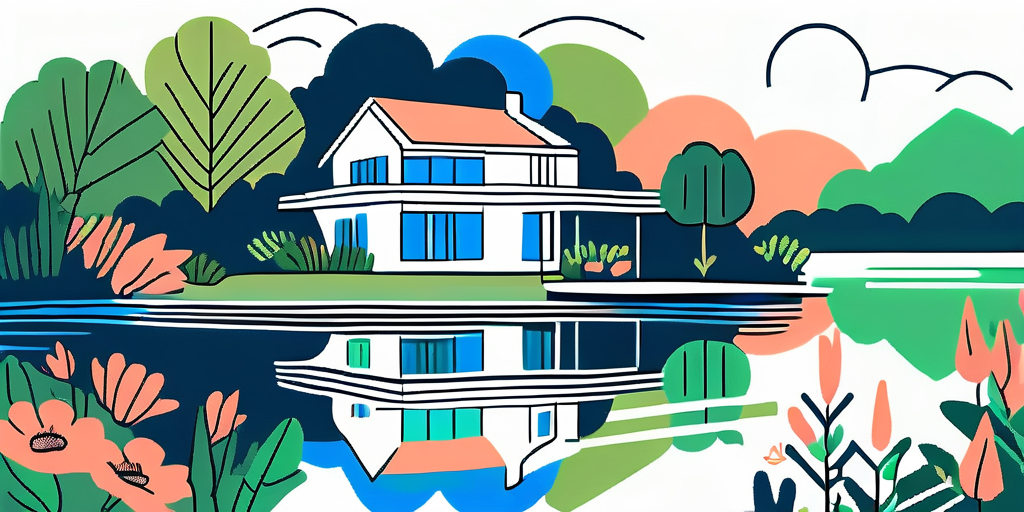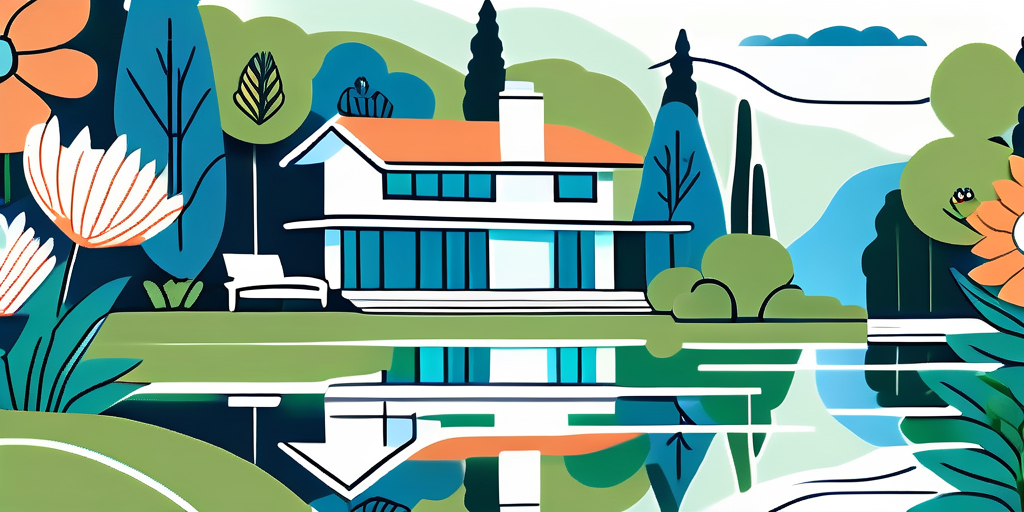
If you’re considering a peaceful lifestyle where nature meets your doorstep, waterfront homes near nature reserves are truly irresistible. Imagine waking up each day to the soothing sounds of nature, with breathtaking views that tap into your sense of peace. In this article, we’ll explore why these homes are becoming increasingly popular among those seeking a tranquil living experience.
Waterfront homes are not just about the views; they capture the essence of a serene lifestyle. Living near water can significantly enhance your everyday experience, merging natural beauty with the comfort of home. The allure of these properties often extends beyond their picturesque settings, as they offer a unique blend of recreational opportunities and a sense of community that is hard to replicate elsewhere.

There’s something undeniably captivating about a view of the water. Whether it’s the gentle rippling of a lake, the soothing sound of ocean waves, or a serene river, the sight of water can instantly uplift your mood. Many homeowners find that living with these views reduces stress and promotes relaxation. The visual connection to water can also inspire a sense of adventure, inviting residents to engage in various water-based activities such as kayaking, paddleboarding, or fishing right from their backyards.
As you gaze out at the water, you may notice how the scenes change with the time of day, shifting from soft morning light to vibrant sunsets. This dynamic environment creates a unique atmosphere that’s both peaceful and inspiring. The reflections on the water can serve as a daily reminder of nature's beauty, encouraging mindfulness and appreciation for the simple pleasures in life. Moreover, many waterfront communities foster a strong sense of camaraderie among neighbors, as shared interests in outdoor activities often lead to lasting friendships.
Being close to nature reserves often means embracing a quieter lifestyle as well. The peaceful surroundings provide a perfect escape from the hustle and bustle of city life. You’re not just buying a home; you’re investing in a lifestyle that prioritizes calmness and clarity. The ability to step outside and immerse oneself in nature—whether it’s taking a leisurely stroll along a nature trail or enjoying a picnic by the water—can greatly enhance one’s quality of life.
Secluded living allows residents to enjoy their privacy while still being close enough to community amenities. It’s a wonderful balance that many find refreshing as they navigate their day-to-day lives. Additionally, the proximity to natural landscapes often leads to increased opportunities for wildlife observation and outdoor recreation, from birdwatching to hiking. This connection to nature not only enriches personal well-being but also fosters a deeper appreciation for the environment, encouraging sustainable practices among residents who wish to preserve the beauty of their surroundings for future generations.
Living near a nature reserve amplifies the advantages of a waterfront home. Nature reserves are vital for wildlife conservation, but they also offer myriad benefits for residents.

Proximity to nature reserves means easy access to outdoor activities. Whether you enjoy hiking, bird watching, fishing, or simply strolling through pristine landscapes, these reserves provide a continuous invitation to explore the great outdoors.
Moreover, being surrounded by nature has been shown to improve mental health, reduce anxiety, and foster a sense of community among residents. Many find that their connection to nature enhances their quality of life immensely. The calming sounds of rustling leaves and chirping birds create a serene backdrop that encourages mindfulness and relaxation, allowing individuals to unwind from the stresses of daily life. Furthermore, community events often take place in these natural settings, such as guided nature walks or educational workshops, which help to strengthen bonds among neighbors and promote a shared appreciation for the environment.
Living near a nature reserve means you’re surrounded by a rich tapestry of wildlife. From vibrant birds to diverse plant life, the natural surroundings create an everyday spectacle. It’s a world brimming with discovery!
For nature enthusiasts, this is an absolute delight. You can witness the changing seasons through the colors of the leaves, the arrival of migratory birds, or the blooming of native plants. Each season brings a new experience in your own backyard. Additionally, the presence of diverse ecosystems encourages educational opportunities for families and children, fostering a sense of stewardship for the environment. Many families take the time to engage in activities like planting native species in their gardens or participating in local conservation efforts, creating a legacy of environmental awareness and responsibility that can be passed down through generations. The thrill of spotting a rare butterfly or hearing the call of a distant owl adds an element of excitement and connection to the natural world that is hard to replicate in urban settings.
The combination of water features and nature creates a harmonious living environment that’s hard to find elsewhere. Waterfront homes near reserves embody a unique blend of scenery and calmness.

Being enveloped in nature provides an unparalleled sense of peace. The sights and sounds of nature can be incredibly soothing, and many individuals find that they sleep better and feel more relaxed in these environments.
This calming effect isn’t just about aesthetics; many studies have shown that spending time in nature can lower cortisol levels and promote overall well-being. It's truly a sanctuary away from everyday stressors.
Moreover, the presence of water itself has been shown to have therapeutic effects. The gentle lapping of waves, the rustle of leaves in the breeze, and the chirping of birds create a natural symphony that can quiet the mind and enhance mindfulness. People often find themselves drawn to water, whether it’s a serene lake, a babbling brook, or the ocean’s edge, as it invites moments of reflection and connection with the environment.
Aside from tranquility, the aesthetic appeal of nature reserves cannot be overstated. The beauty of natural landscapes, from glistening water surfaces to lush green flora, ensures that your surroundings are constantly inspiring.
Many homeowners love to enhance their outdoor experience by creating beautiful gardens or relaxing patios that blend seamlessly into the landscape. It creates a unique outdoor living space that’s perfect for both entertaining and relaxation.
In addition to personal gardens, many communities near these natural reserves often host events that celebrate the local flora and fauna. From flower festivals to guided nature walks, these gatherings not only foster a sense of community but also encourage residents to appreciate and engage with their stunning surroundings. The changing seasons bring a dynamic beauty to the landscape, with vibrant autumn leaves, blooming spring flowers, and the serene stillness of winter, ensuring that there is always something new to admire and enjoy.
Finding the perfect waterfront home involves careful consideration. You want to ensure that the home not only meets your aesthetic and functional needs but also complements your lifestyle.
When embarking on this journey, consider various factors such as location, accessibility, and the specific features of the home. Assessing the surrounding community is crucial—does it offer amenities that align with your lifestyle?
Additionally, think about the maintenance of the property. Waterfront homes may require more upkeep, especially regarding landscaping and managing moisture levels. Evaluating your willingness to invest time and resources into maintenance is essential before making a decision. Furthermore, consider the environmental factors that come with living near water. Flood zones, erosion risks, and local wildlife can all impact your living experience. Understanding these elements will help you prepare for any challenges that may arise and enhance your appreciation for the natural beauty surrounding your home.
Engaging a real estate agent familiar with the specific area can significantly ease the process. They can offer insights about the market and assist in finding listings that might not be widely advertised.
Don't rush your decision! Spend time visiting potential homes and exploring the nature reserves. Each visit will help clarify what you envision for your dream home and lifestyle. Additionally, take the time to connect with local residents and immerse yourself in the community. They can provide valuable perspectives on living in the area, including seasonal changes and local events that may enhance your experience. Exploring the local culture and recreational opportunities, such as hiking trails, kayaking spots, or bird-watching areas, can also help you determine if the location truly aligns with your interests and passions.
The advantages of living near water and nature extend beyond the visual and experiential aspects. Numerous studies increasingly show a positive link between natural environments and health outcomes. The presence of green spaces and bodies of water has been associated with lower levels of anxiety, depression, and even chronic diseases, making it an essential consideration for those looking to enhance their quality of life.
Natural environments can facilitate physical activity, encouraging you to develop healthier habits. Hiking, biking, or even leisurely walks can become regular activities when you have nature at your doorstep. Access to trails, parks, and waterfronts not only promotes exercise but also fosters a sense of community as you engage with neighbors and fellow nature enthusiasts.
Moreover, the mental health benefits are considerable. Reduced stress, enhanced mood, and even improved cognitive function can often be attributed to regular interaction with natural surroundings. Studies have shown that spending time in nature can lower cortisol levels, a key stress hormone, and can lead to improved focus and creativity, making it easier to tackle daily challenges.
Scenic beauty provides an emotional boost. Incorporating beautiful vistas into your daily life can help instill a sense of gratitude and appreciation for the world around you. The simple act of gazing at a serene lake or a lush forest can trigger positive emotions, leading to a more optimistic outlook on life. This connection to nature can also inspire mindfulness, allowing individuals to be more present and engaged in their daily activities.
Creating a schedule that involves nature—whether it's a morning coffee next to the water or an evening walk under the stars—can enrich your days. By investing in a waterfront home near nature reserves, you’re making a choice not just for today, but for your overall well-being for years to come. Additionally, these natural settings often provide opportunities for recreational activities such as kayaking, birdwatching, or picnicking, further enhancing your lifestyle and social interactions. The benefits of living in such environments extend to fostering a sense of belonging and connection to the community, as residents often share a common appreciation for their surroundings.